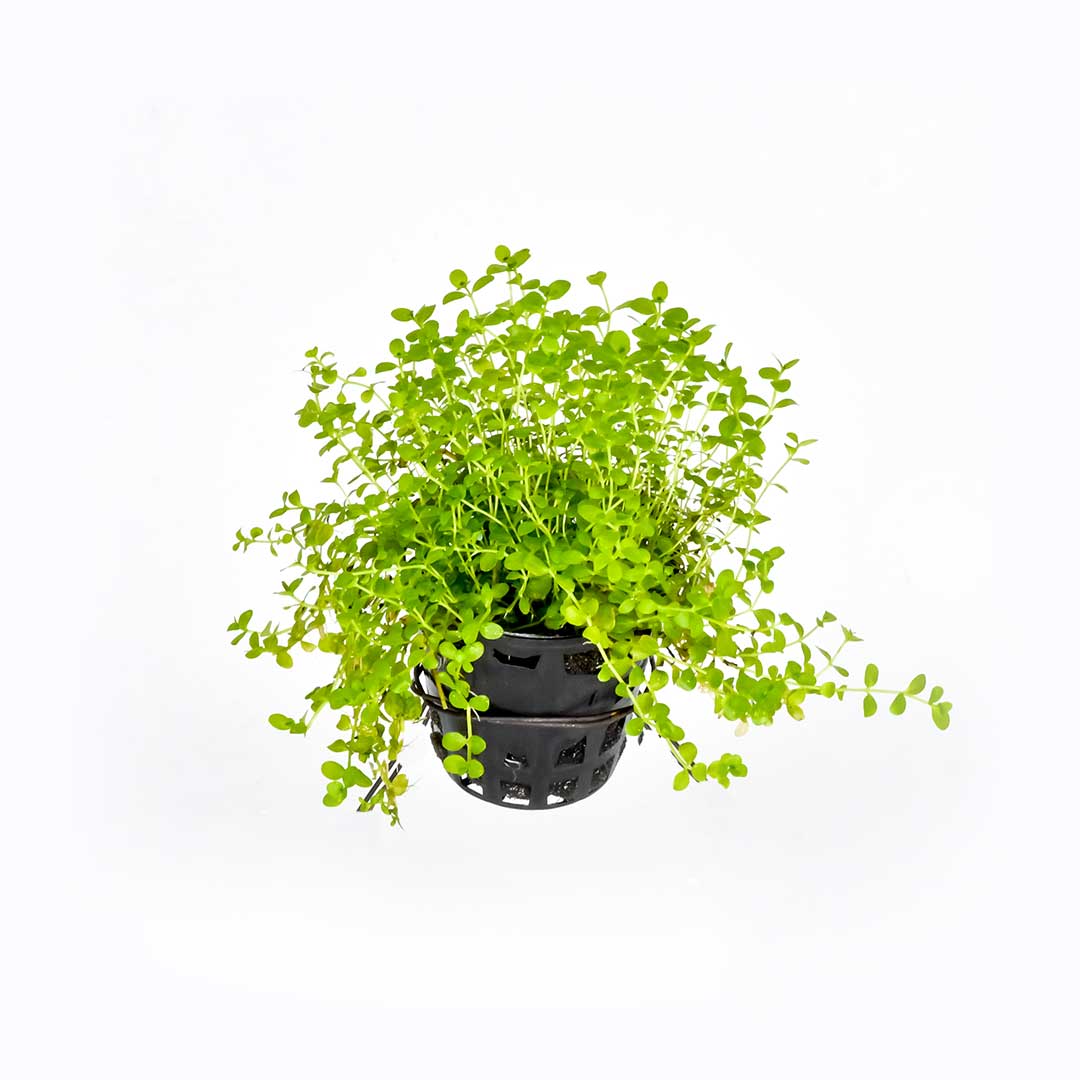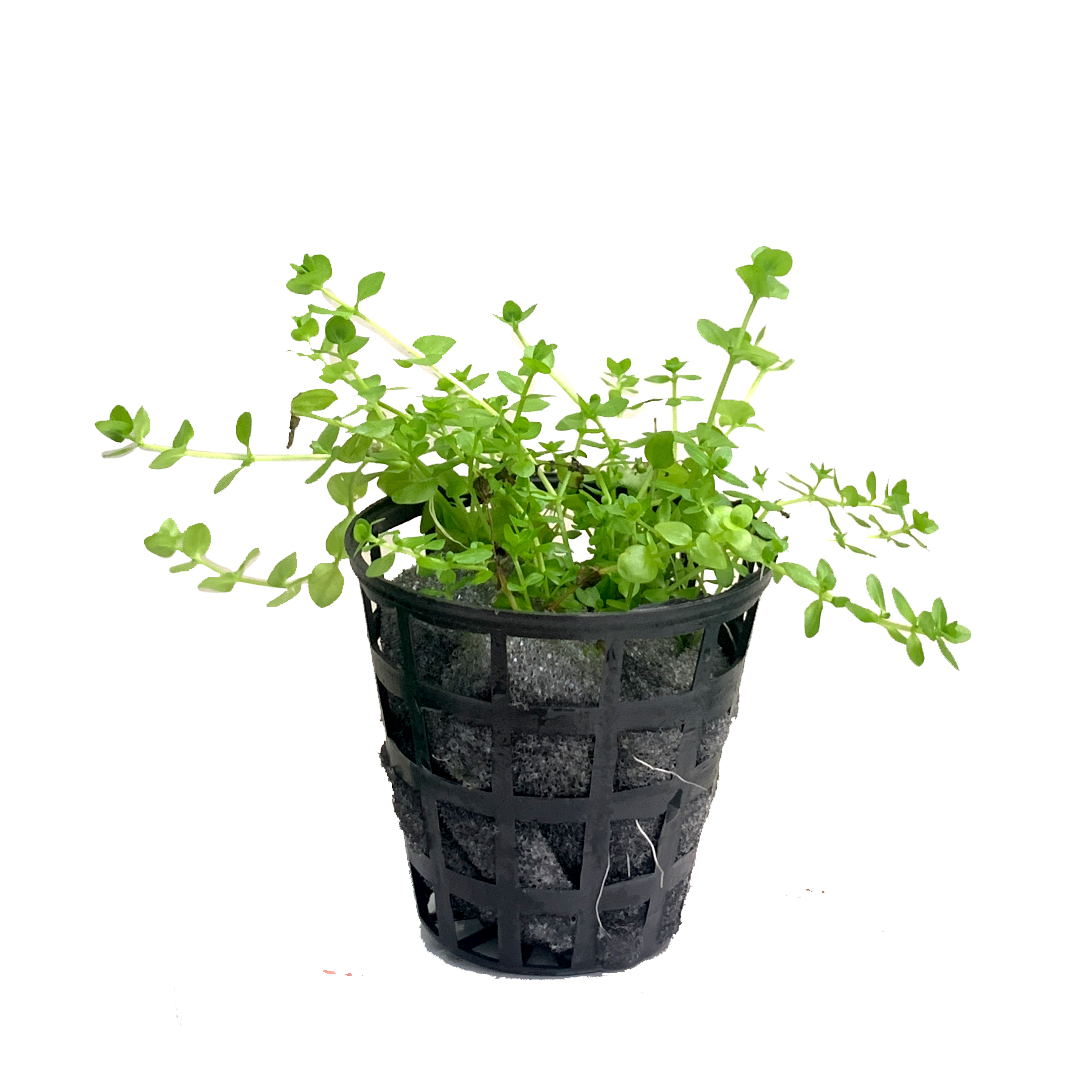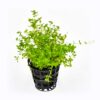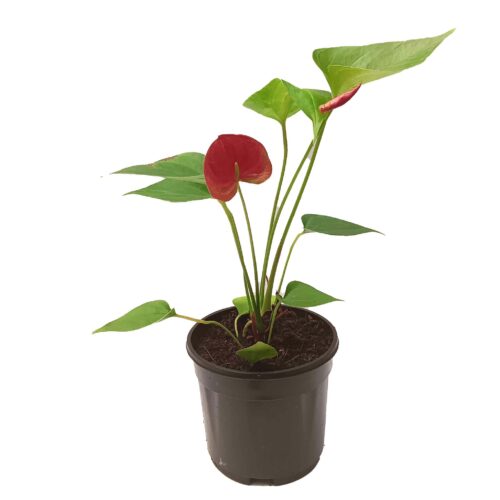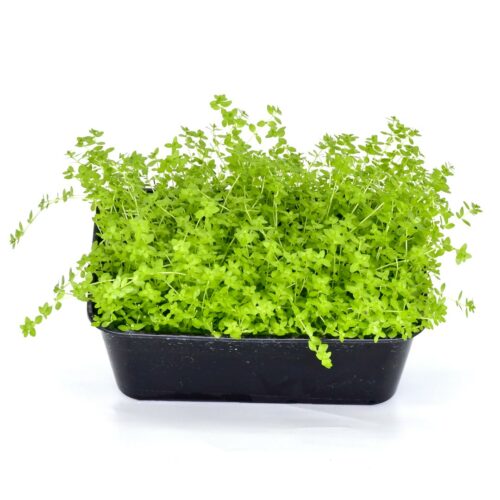Micranthemum Micranthimoids ‘Monte Carlo’ is a beautiful carpeting plant that was reportedly discovered in Argentina. Tropica received their first sample for testing in January 2013, making it a relatively new species to the aquarium hobby. It was grown alongside Hemianthus callitrichoides ‘Cuba,’ Micranthemum umbrosum, and Glossostigma elatinoides in Tropica’s laboratory to see how it compared. It grew similarly to Hemianthus ‘Cuba,’ but was far more adaptable and easier, growing faster and creating a perfect carpet even with lower lighting and CO2 levels. As a result, it was added to the Tropica stock list and went into full production as a regular pot and 1-2-Grow tissue culture cup, becoming one of the hobby’s most popular carpeting plants. Christel Kasselmann formally identified it as Micranthemum tweediei in 2017.
This Micranthemum species is currently popular around the world, with a high demand in the aquarium trade. This plant was originally found in Argentina. The leaves are round, light green, and arranged oppositely on the stem. A very graceful creeping plant that is adaptable due to its moderate ease. In a nutrient-rich environment, it will form a dense carpet. It can also survive in low-light conditions. The addition of CO2 is required. Thinning the densely grown ones will help the plant maintain normal growth; otherwise, the creeping stems beneath will begin to decay, potentially causing the entire mat to uproot.
Micranthemum ‘Monte Carlo’ is an Argentine aquatic plant with a low growth rate. It’s a great foreground plant that can grow into a thick carpet of green foliage if given enough light and nutrients. The leaves are small and round, with a lovely bright green coloration that will complement any neutral toned substrate. This plant is very similar to Hemianthus Callitrichoides (HC/Dwarf Baby Tears), but the leaves are larger and it is easier to grow in our experience. We recommend Monte Carlo to hobbyists who are having difficulty growing HC.
High lighting and Co2 injection are required to keep this plant from overgrowing. Vertically growing thin stalks indicate a lack of lighting, whereas yellowing leaves indicate a nutritional deficiency. A lack of Co2 can also be indicated by thin leaves. When grown properly, this plant can grow quickly and requires regular trimming.
In dry start aquariums and Wabi Kusa, this plant can grow submerged or emersed. This plant can be difficult to keep planted in the substrate because it is small and has tiny roots. Dry start can help in this case by giving the roots time to anchor into the substrate before flooding the tank.


